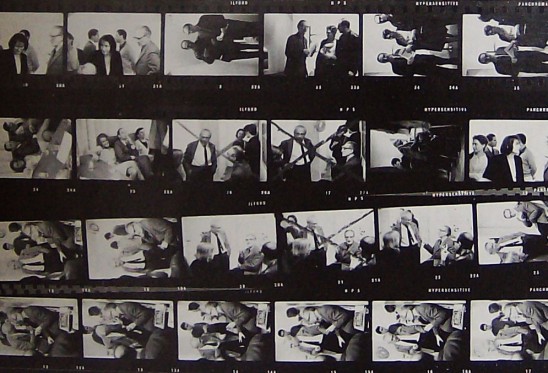Photographic Archives and Contemporary Art in Italy: Investigation, Interpretation, Inspiration

This event is part of the New Work in the Arts & Humanities: Bodies of Knowledge series.
Photography in the postwar period became an essential element of visual experimentation in its dual capacity as both a component of and a vehicle for the work of art. If today the use of photography within the artistic field and the photographic documentation of the work of art constitute solid areas of research, little attention has been given to the photographic archives themselves as sources for the study of contemporary art. The photographic archive should in fact be considered not merely as a collection of anonymous information or pictures, but as a complex body, defined by the visual cultures of diverse subjects (artists, professional photographers, gallery photographers, etc), characterized by a problematic heterogeneity of documents (negatives, proofs, prints, annotations, correspondence, bibliographic materials), and organized materially according to variable logics of production and circulation.
The conference intends to present and discuss research on the photographic archives of artists and photographers that documented artistic practice in Italy from the 1960s to the 1980s, with particular regard to the context of production, collection, and circulation of photographs. As opposed to the fetishization of a single authored snapshot, particular focus will be given to studies that recuperate the place of images within an originating series, that reconstruct the reasons for its extraction and that analyze the reuse of photographs in either the linguistics of the artist’s montage or in their diffusion within various editorial contexts.
By way of a suitable number of case studies the conference therefore proposes to clarify the avenues by which some artworks or events, as determined by the selective reproduction and entrance into history of their image, become icons of contemporaneity. It aims to restore to such works the complexity and visual stratification that have accompanied their genesis and use by reconstructing the contexts that witnessed the elaboration of new styles and by redefining the professional identities of the artist and the photographer and the interchange between them.
Organized by the Department of Humanities at Roma Tre University, the American Academy in Rome, and Rome’s Istituto Centrale per la Grafica, the conference will take place over the course of two days. Presentations will be organized into three distinct sessions dedicated to questions of methodology in the study of photographic archives, to artistic culture in Rome between 1960 and 1980, and to analogous stylistic and chronological practices in diverse geographic contexts.
Conference Location:
Istituto Centrale per la Grafica, Sala Dante
entrance through Palazzo Poli, Via Poli, 54
- Backpacks and luggage with dimensions larger than cm 40x35x15 (inches 16x14x6) are not permitted on the property. There are no locker facilities available.
Papers will be presented in English and Italian.
Conference organizing committee: Barbara Cinelli (Università Roma Tre), Antonello Frongia (Università Roma Tre), Maria Antonella Fusco (Istituto Centrale per la Grafica, Roma), Lindsay Harris (American Academy in Rome), Laura Iamurri (Università Roma Tre).
Conference collaborators:
Dipartimento degli Studi Umanistici di Roma Tre
Istituto Centrale per la Grafica
Contact sheet of photographs taken by Plinio De Martiis, gallerist of La Tartaruga, and published in the gallery's magazine, Catalogo (1963). The photographs document the inauguration of an exhibition of work by Gianfranco Baruchello and Marcel Duchamp.